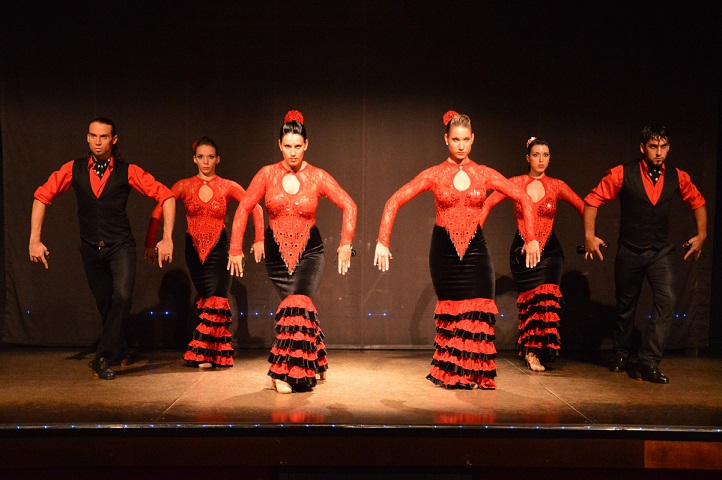6 Intriguing Facts About Flamenco
 If you are travelling to Spain, you are probably familiar with Flamenco. This is an exciting and moving performance that is not to be missed! Flamenco is representative of Southern Spain’s strong musical and artistic culture and is well worth discovering on your next trip to Spain. Here are 6 intriguing facts about Flamenco:
If you are travelling to Spain, you are probably familiar with Flamenco. This is an exciting and moving performance that is not to be missed! Flamenco is representative of Southern Spain’s strong musical and artistic culture and is well worth discovering on your next trip to Spain. Here are 6 intriguing facts about Flamenco: 1. What is Flamenco?
Flamenco is a passionate Spanish dance. The performance is also known for its singing, guitar playing, romance and colourful costumes. People describe Flamenco as a state of mind in that it is an expression of deep emotions. In addition, it creates a connection with the audience. If it doesn’t, then the artist fails.
2. How did Flamenco originate?
Flamenco’s mysterious origin can be traced back to Andalusia, in the South of Spain and dates back to nearly five hundred years! Even though it is part of the Spanish culture, it was largely influenced by the Latin America, Cuba, Jews, Romans and the Moors. The arrival of the nomadic gypsies in the 15th century marks the introduction of new rhythms and musical instruments.
3. Flamenco is a mixture of culture
Due to Flamenco’s origin, it is a diverse dance that mixes different cultural influences such as Islamic, Andalucian, gypsy, Sephardic and Arabic. It’s singing and music can be traced back to the Punjabi singing of India, Persian Zyriab, classical Andalusian orchestra from the Islamic Empire, Jewish Synagogue chants, Arabic Zayal, Andalusican folk, Mozarabic forms, western African influences from New World Caribbean, Central and South Amercian colonies.
4. Singing is the most important element of Flamenco music
“Cante” is the most important element of flamenco music. Original Flamenco was comprised purely of singing and handclapping. The songs are passionate, intense, deep and emotional. They are improvised by toe and heel clicking, finger snapping, hand clapping and shouting. It wasn’t until the 19th century that the guitar was incorporated.
5. Flamenco costumes derived from gypsies
It is thought that today’s flamenco clothes were traditional Andalusian but they actually originated from the Spanish gypsies in the 19th and 20th century. The gypsy women were dressed in calico gowns with ruffles. That look was adopted by other women of other classes over time. Flamenco is a strong art form and therefore many strong colours such as black, white, red have come to represent the performance.
6. There was a Golden Age
Flamenco had a Golden Age in which the performance gained popularity and spread from Andalusia to other areas of Spain and the world. It lasted from 1869 until around 1910. Performances started taking place in cafes and even ticket prices were charged.

Now that you know a bit more about Flamenco, here is where you can experience it while you are in Spain:
Andalusia:
Flamenco Show in Cordoba
Flamenco Show in Granada
Flamenco Show in Sevilla
Flamenco Show Pepe Lopez in Costa Del Sol
Madrid:
Flamenco Las Carboneras
Barcelona:
Palacio del Flamenco
Sources:
http://www.andalucia.com/flamenco/home.htm
http://www.seville-traveller.com/flamenco-dancing/
http://www.myinterestingfacts.com/flamenco-dancing-facts/
http://www.centralhome.com/ballroomcountry/flamenco_history.htm
http://www.spanish-fiestas.com/culture/flamenco-dance/


